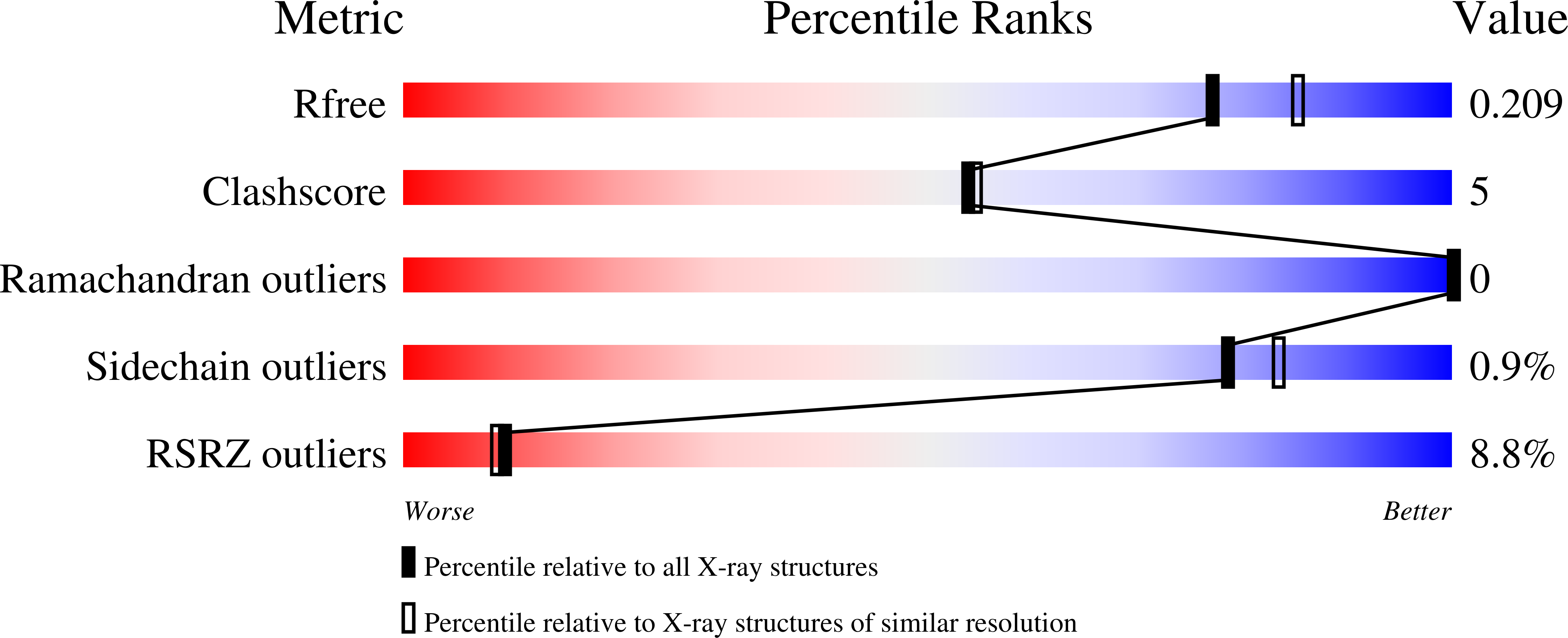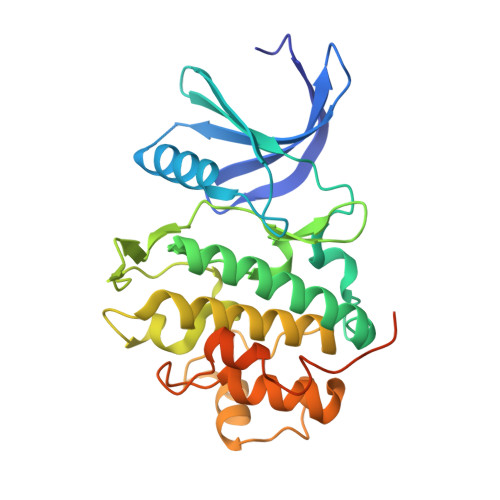Design and Synthesis of Pyrrolo[2,3- d ]pyrimidine-Derived Leucine-Rich Repeat Kinase 2 (LRRK2) Inhibitors Using a Checkpoint Kinase 1 (CHK1)-Derived Crystallographic Surrogate.
Williamson, D.S., Smith, G.P., Mikkelsen, G.K., Jensen, T., Acheson-Dossang, P., Badolo, L., Bedford, S.T., Chell, V., Chen, I.J., Dokurno, P., Hentzer, M., Newland, S., Ray, S.C., Shaw, T., Surgenor, A.E., Terry, L., Wang, Y., Christensen, K.V.(2021) J Med Chem 64: 10312-10332
- PubMed: 34184879
- DOI: https://doi.org/10.1021/acs.jmedchem.1c00720
- Primary Citation of Related Structures:
7BJD, 7BJE, 7BJH, 7BJJ, 7BJM, 7BJO, 7BJR, 7BJX, 7BK1, 7BK2, 7BK3, 7BKN, 7BKO - PubMed Abstract:
Inhibitors of leucine-rich repeat kinase 2 (LRRK2) and mutants, such as G2019S, have potential utility in Parkinson's disease treatment. Fragment hit-derived pyrrolo[2,3- d ]pyrimidines underwent optimization using X-ray structures of LRRK2 kinase domain surrogates, based on checkpoint kinase 1 (CHK1) and a CHK1 10-point mutant. (2 R )-2-Methylpyrrolidin-1-yl derivative 18 (LRRK2 G2019S c K i 0.7 nM, LE 0.66) was identified, with increased potency consistent with an X-ray structure of 18 /CHK1 10-pt. mutant showing the 2-methyl substituent proximal to Ala147 (Ala2016 in LRRK2). Further structure-guided elaboration of 18 gave the 2-[(1,3-dimethyl-1 H -pyrazol-4-yl)amino] derivative 32 . Optimization of 32 afforded diastereomeric oxolan-3-yl derivatives 44 and 45 , which demonstrated a favorable in vitro PK profile, although they displayed species disconnects in the in vivo PK profile, and a propensity for P-gp- and/or BCRP-mediated efflux in a mouse model. Compounds 44 and 45 demonstrated high potency and exquisite selectivity for LRRK2 and utility as chemical probes for the study of LRRK2 inhibition.
Organizational Affiliation:
Vernalis (R&D) Ltd., Granta Park, Great Abington, Cambridge CB21 6GB, U.K.
















